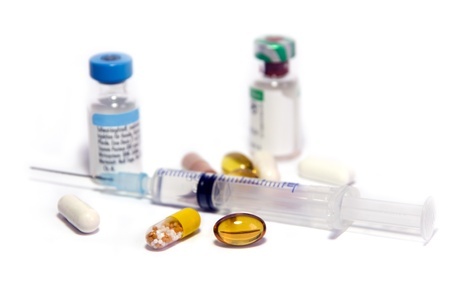Testosterone Thromboembolism

The use of low-T therapy medications, including AndroGel, Androderm and Testim, have been linked to the development of venous thromboembolism, dangerous blood clots that include deep vein thrombosis and pulmonary embolism. Thousands of men are now pursuing compensation via testosterone lawsuits that claim the manufacturers of these drugs failed to provide adequate warnings about these and other life-threatening cardiovascular side effects.
Testosterone Legal Consultations
The nationwide law firm of Bernstein Liebhard LLP is now offering free legal consultations to men who may have suffered a testosterone-related thromboembolism while undergoing low-T therapy. To learn more, please call our office at (888) 994-5118.
What is Thromboembolism?
Thromboembolism encompasses two serious blood clotting conditions:
- Deep Vein Thrombosis: A thromboembolism that occurs deep in the veins of the legs or pelvis. These blood clots can inhibit circulation, and small pieces may break away and become trapped in the heart, lung, or brains.
- Pulmonary embolism: This occurs when a thromboembolism travels to the lungs. Because they cut off blood supply to the lungs, a pulmonary embolism is extremely dangerous and proves fatal in about 30% of cases.
The signs and symptoms of a pulmonary embolism:
- Acute onset of dyspnea (shortness of breath) is the most common symptom of pulmonary embolism
- Chest pain, cough or hemoptysis (coughing up blood)
- Syncope (loss of consciousness)
- Apprehension and anxiety
Those associated with a deep vein thrombosis include:
- Lower-extremity swelling that is warm to touch or tender
- Tachypnea (rapid breathing)
- Tachycardia (rapid heart beat)
- Fever
- Cyanosis (blue discoloration of the skin)
Testosterone Thromboembolism Warnings
Some men using low-T therapy may develop a condition called polycythemia, which occurs due to a thickening of the blood. This condition promotes the formation of thromboembolisms like deep vein thrombosis and pulmonary embolism. For some time now, the labels for prescription testosterone treatments have included a warning about venous blood clots associated with polycythemia.
In June 2014, the FDA required manufacturers to include a general warning in the drug labeling of all approved testosterone products about the risk of venous thromboembolism that may occur in the absence of polycythemia. The label change was prompted by post-marketing reports of venous thromboembolisms that had occurred in testosterone patients who were not suffering from polycythemia Read More
Legal Help for Victims of Testosterone Thromboembolism
Legal help is available if you or a man you care about suffered a thromboembolism, deep vein thrombosis, or pulmonary embolism while undergoing low-T therapy. To learn more about the growing testosterone litigation, please call (888) 994-5118.
- FDA, June 2014. “FDA Adding General Warning to Testosterone Products About Potential Venous Blood Clots” http://www.fda.gov/drugs/drugsafety/ucm401746.htm
Get the latest news and litigation updates about this case by following us on Facebook. Click the "Like" button below.
Follow Us


